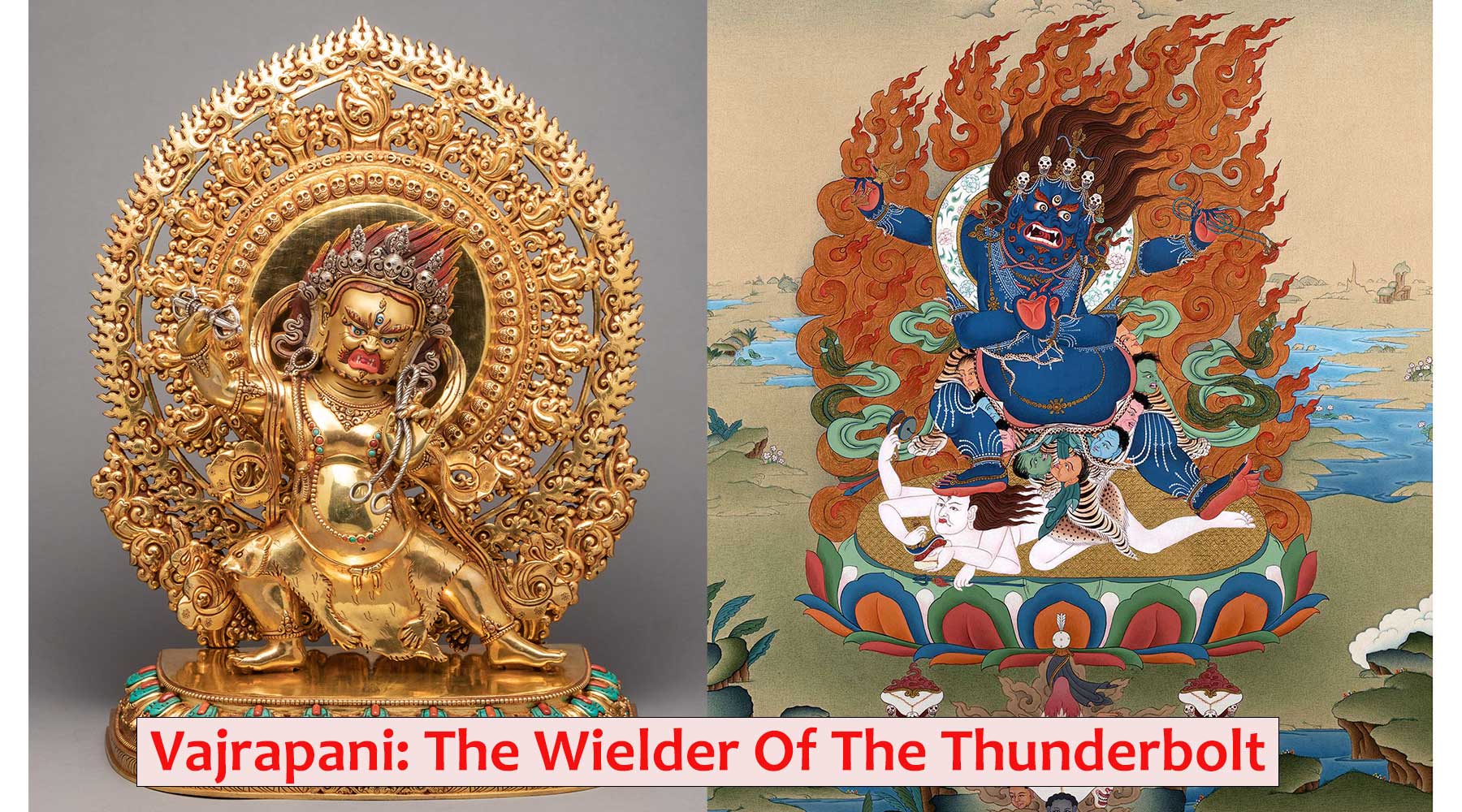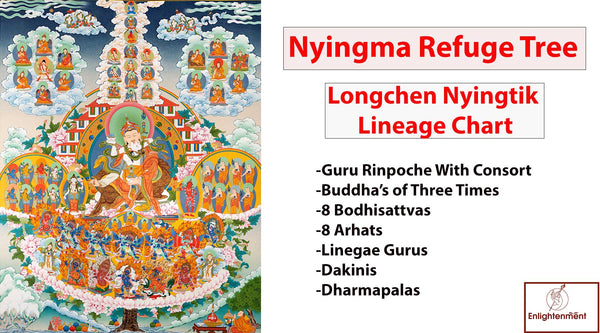Vajrapani: Bodhisattva of Enlightened Activities
Vajra and Pani are terms for "in the hands" and "thunderbolt/diamond," respectively, in Sanskrit. He belongs to the first generation of Mahayana Bodhisattvas. He is regarded as the protector of the Nagas and is said to be the self-born Buddha, "Aksobhya," in manifestation. The Nagas are a race of half-human, half-serpent creatures, and the mythical Garuda, which resembles a hawk, is their traditional foe. Vajrapani occasionally adopts a birdlike form to deceive Garuda. He is summoned during droughts because of his links to the Nagas, who control the rain, and to Indra, the Hindu god of rain.
Vajrapani symbolizes the Buddha's vitality, strength, and fearlessness. He is one of the three guardian deities that encircle the Buddha, together with Avalokiteshwara and Manjushri. He is also known as the "Lord Of Secrets" since it is stated that he is in charge of transferring tantras to the human realm (Guhyapati).
Click here to view our Hand-Painted Vajrapani Thangka Collection
With the legend of the Shaolin monk Sengchou praying to Vajrapani and obtaining combat skill and superhuman strength, Vajrapani is supposed to be the patron saint of the Shaolin Monastery.
Vajrapani, as a Bodhisattva, embodies the mental force of enlightenment. Boddhisattvas are individuals who strive for everyone's enlightenment and their own. They are revered and request assistance when necessary. They are regarded as models of compassion and understanding. The Bodhisattva takes 4 pledges,
- To find the truth and pass it on to others
- To save all beings from hardships
- To extinguish all evil desires
- To guide all beings to enlightenment
A Bodhisattva can no longer be reincarnated and will not be able to assist other creatures if he passes the threshold into enlightenment on his own. As a result, as he is about to jump off a cliff, he stops, turns around, and deliberately reincarnates.
Symbolic Portrayal Of Vajrapani in Thangka
The color of Vajrapani is depicted as dark blue. Most people think that Aksobhya, the head of the Vajra Family, gives him this hue. The overall meaning of this hue is to depict his thundering rage and his ancestry as a God of Thunder. However, it also resembles a thundercloud. His being shown as wrathful implies more than simply that he explodes in wrath. He epitomizes the Buddhas' power, vibrancy, and fearlessness and represents much more than is usually given credit for.
He takes a posture known as the warrior, which is common among Hatha Yoga practitioners. Vajrapani is commonly shown with a halo of flames around him while dancing furiously. This is meant to represent the transformative power of the awakening. His left hand is wielding a demon-binding lasso, while his right hand is holding a vajra. Vajrapani may be seen, his tiger hide loincloth hanging about his hips. He's got a five-pointed Bodhisattva crown on.
5 skulls are used as the crown's ornaments. He wears a snake around his neck, and his belly is covered with bizarre jewelry. Rain and clouds are often associated with snakes and dragons. They are compatible with the thunder god Vajrapani's ancestry. Vajrapani looks furious, yet as he represents an enlightened mind, he is devoid of anger.
Vajrapani Depiction in Mythology
Vajrapani is tied to Jupiter and Zeus as both symbolize the same thunderbolt-wielding sky god, Indra, in mythology. Indra is the thunder god and the leader of the gods. The previous incarnation of Vajrapani is not wrathful, and depictions of him show a strong, semi-naked muscular man like the Greek god Hercules. He is even seen as a manifestation of the Hindu war god Kartikeya or Skanda, who wields a Vajra and wears a blazing halo.
Mantra Of Vajrapani
"Om Vajrapani Hum"
Vajrapani's mantra, which uses his name as a reference, is simple. Between the mystic Om and Hum, it mainly consists of the words "wielder of the thunderbolt." Even though it may appear simple, this mantra's strength enables us to unite with the unstoppable force that Vajrapani symbolizes. Having a particular affinity with Vajrapani is beneficial in this scenario, of course. But the tone of the phrase is already motivating.
The Vajrapani mantra Om Vajrapani Hum means harnessing the limitless and tremendous energy that Vajrapani emits through learning. This mantra is only his name, a combination of the mystical syllables om and hum that means "wielder of the thunderbolt."
We may access the kind of unstoppable energy that Vajrapani represents by reciting this mantra. Imagine it as a way to connect to his limitless energy and draw power, wisdom, and relief from our pain. A deeper understanding of Vajrapani himself only reinforces the mantra's positive and energizing vibe.


